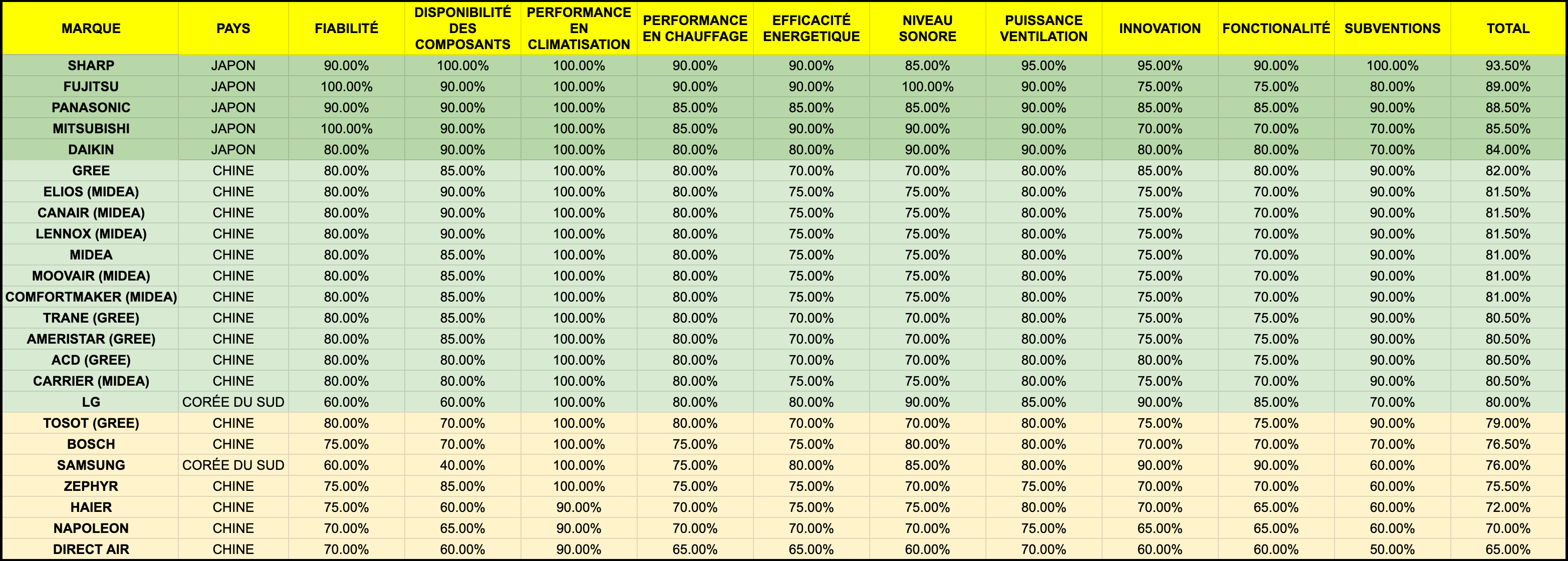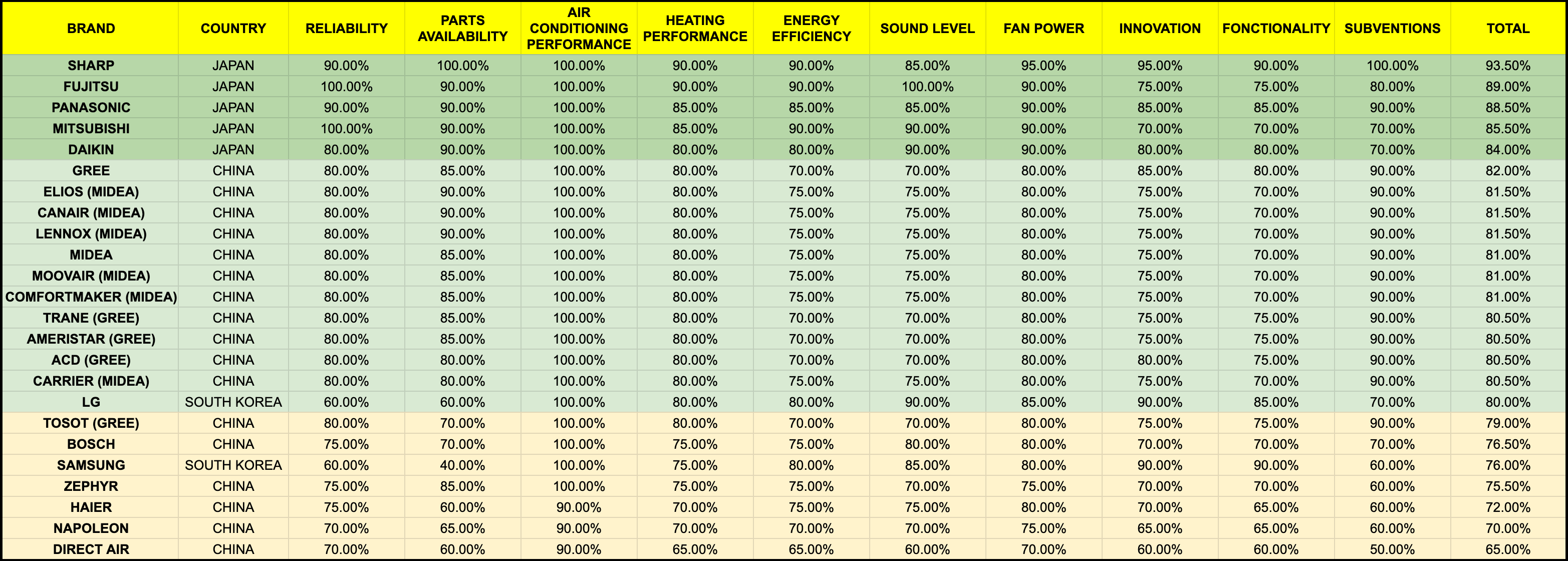Buying Guide: Best Wall-Mounted Heat Pump 2025 | Price, Warranty, Grants

Welcome to our comprehensive guide for purchasing a wall-mounted heat pump in 2025. Whether you’re looking to improve your home’s comfort, reduce energy costs, or adapt to the challenges of Quebec’s harsh climate, this guide is designed to provide you with all the essential information. Here, you’ll discover the key criteria for choosing the ideal model, the leading brands available, and practical tips to maximize your device’s performance and longevity. With our expertise and thorough analysis, you’ll be better equipped to make an informed decision that aligns with your specific needs.
From Manufacturing to Installation: Understanding the Journey of Your Wall-Mounted Heat Pump
-
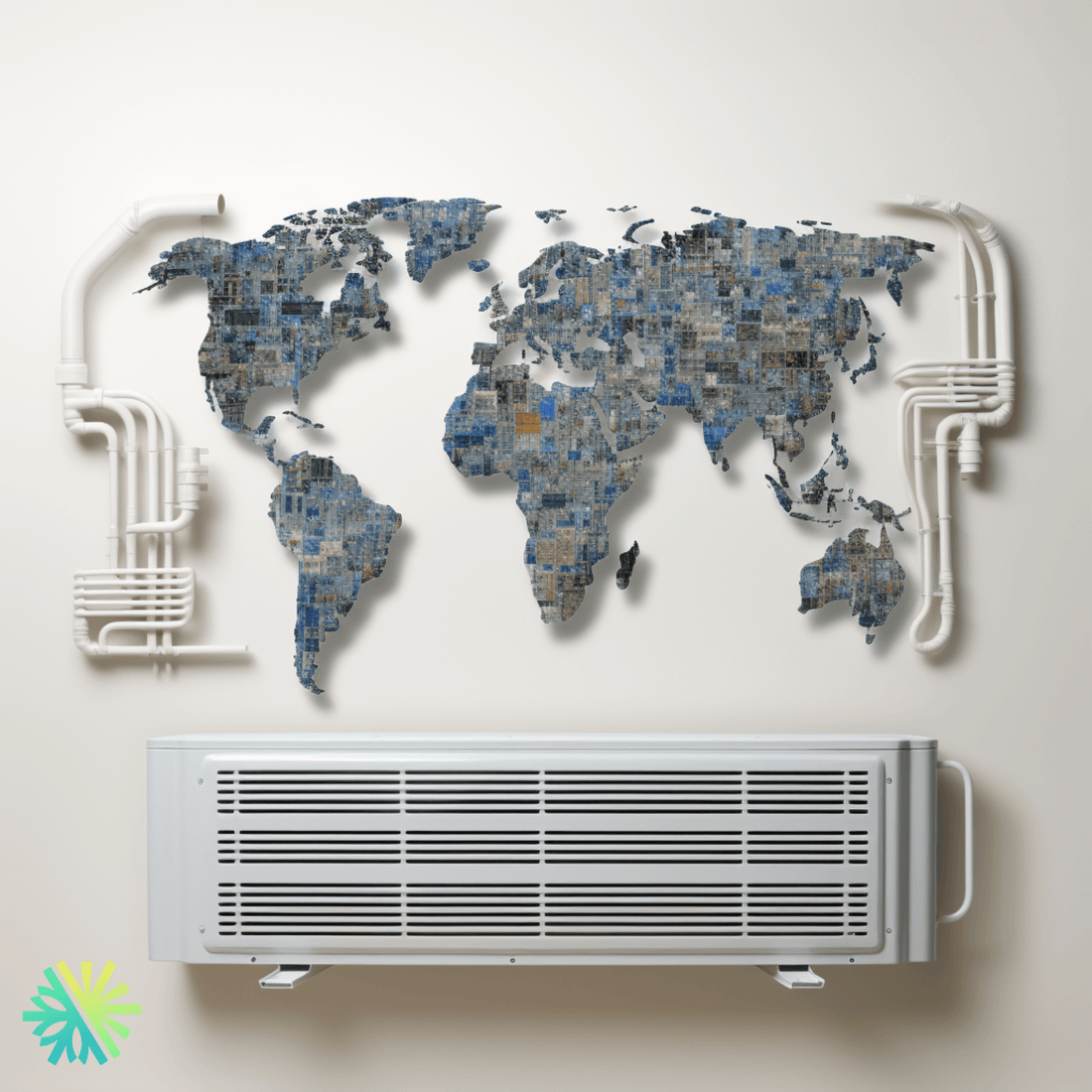
column
When purchasing a wall-mounted heat pump , it is crucial to understand the process that leads from the manufacturer to the installation in your home . This often overlooked path plays a determining role in the quality of the service you will receive and the durability of your unit. Let’s explore the three key steps of this process together , along with an essential overview to make an informed choice.
The Manufacturer: The Origin of Your Heat Pump
All roads lead to Asia. Wall-mounted heat pumps are not made in America. The biggest brands, such as Fujitsu, Sharp, Daikin, Mitsubishi, LG, Lennox, Gree and Midea , come mainly from countries such as Japan, South Korea, China or Thailand. These manufacturers design devices adapted to international markets, but not always optimized for the rigors of our Quebec climate.
🔑 Practical advice: When choosing a brand, focus on those that have been well established in Quebec for several years. These manufacturers better understand local climate challenges, and their devices have proven themselves in extreme winter conditions.
-
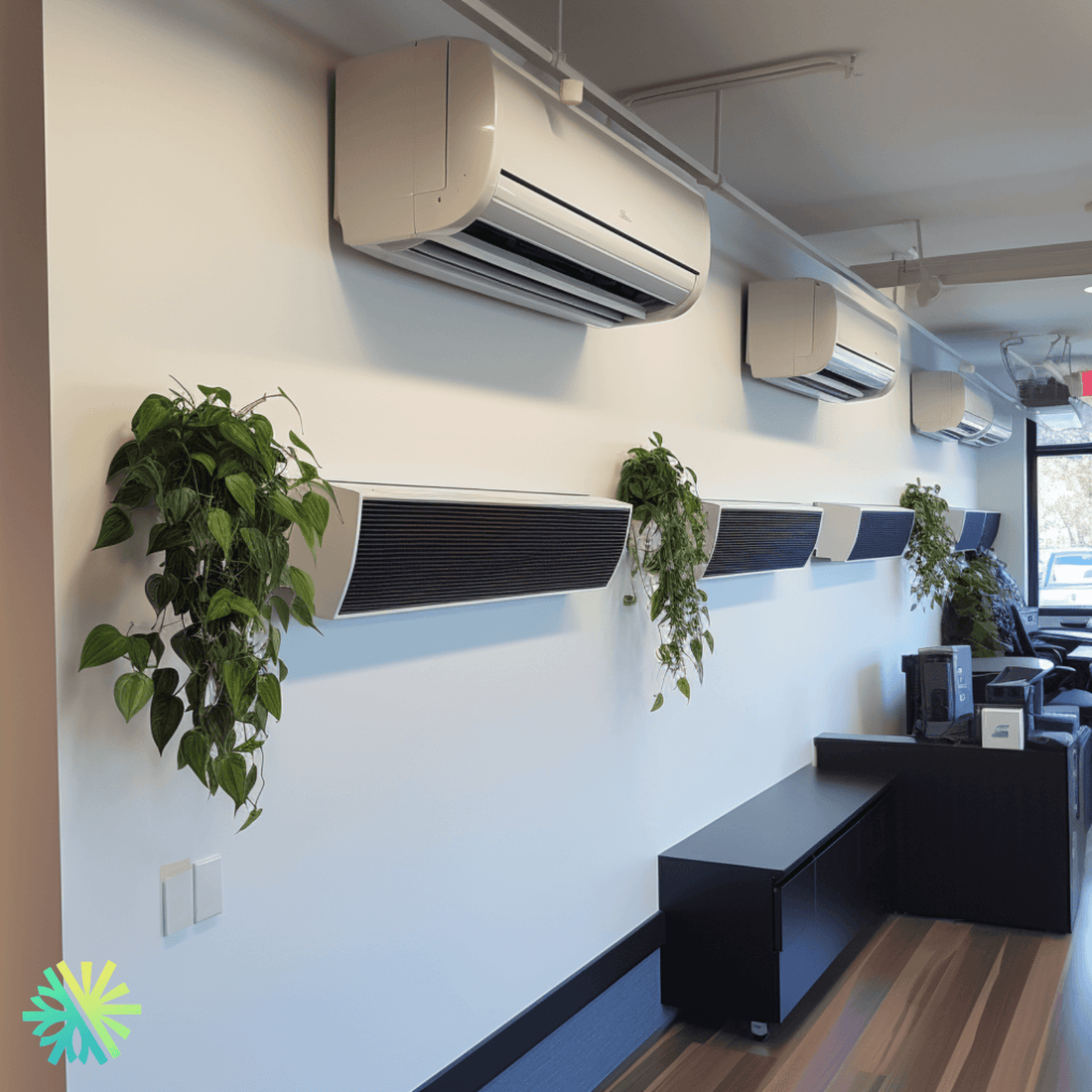
The Distributor: The Logistics Pivot
The distributor plays a vital role. After being manufactured, heat pumps are shipped by boat (a journey that takes about two months) and arrive at local distributors, such as GREE , RBL or MASTER . These companies ensure the availability of parts and machines for contractors.
🔎 Be careful: The size of the distributor does not guarantee good service. Large distributors can sometimes be overwhelmed and need weeks to ship a part from another branch in Canada or the United States. On the other hand, some small distributors specialized in a specific brand offer always up-to-date inventory and ultra-fast service, including the complete replacement of a machine in the event of a problem.
-

The Entrepreneur: Your Trusted Partner
This is where it all comes together. The contractor is the one who installs your heat pump, ensures its proper operation, and responds to your needs in the event of a problem. However, not all contractors are equal. It is crucial to choose a company with a good reputation , valid licenses , liability insurance , and a proven track record in the field.
✨ Why it’s so important:
The quality of the installation often takes precedence over the brand of the unit. Even the best heat pump can run into problems if it is poorly installed or if the necessary parts are not available quickly. In addition, it is essential to choose a contractor who remains available after the installation. At AirGreen , we receive many calls from customers who have worked with companies that no longer respond.Quick tip: Take the time to call a potential contractor and ask if they offer repair services for existing heat pumps. How they answer this question can say a lot about their ability to provide attentive, quality follow-up in the long term.

A Thoughtful Purchase: The Keys to a Successful Investment
Here are some important points to keep in mind when making your purchase:
Understand what you are buying: It’s not just the brand that matters, but also where you buy it and who installs it. Even the best warranties are useless if the contractor or dealer is unreliable.
Ask questions: Talk to your contractor about their experience with machine parts and typical turnaround times for repairs.
Avoid extremes: A large distributor does not guarantee better service, just as a small distributor does not necessarily mean less. Trust your contractor to guide you towards the most appropriate choice.
Check licenses and experience: Make sure your contractor has all the necessary certifications and sufficient experience to ensure a proper installation.
In summary, a wall-mounted heat pump is a long-term investment. Take the time to choose a trusted contractor and a reputable distributor. The quality of your experience depends as much on the installation as on the machine itself.
The price of wall-mounted heat pumps: Understanding what you're paying for
-
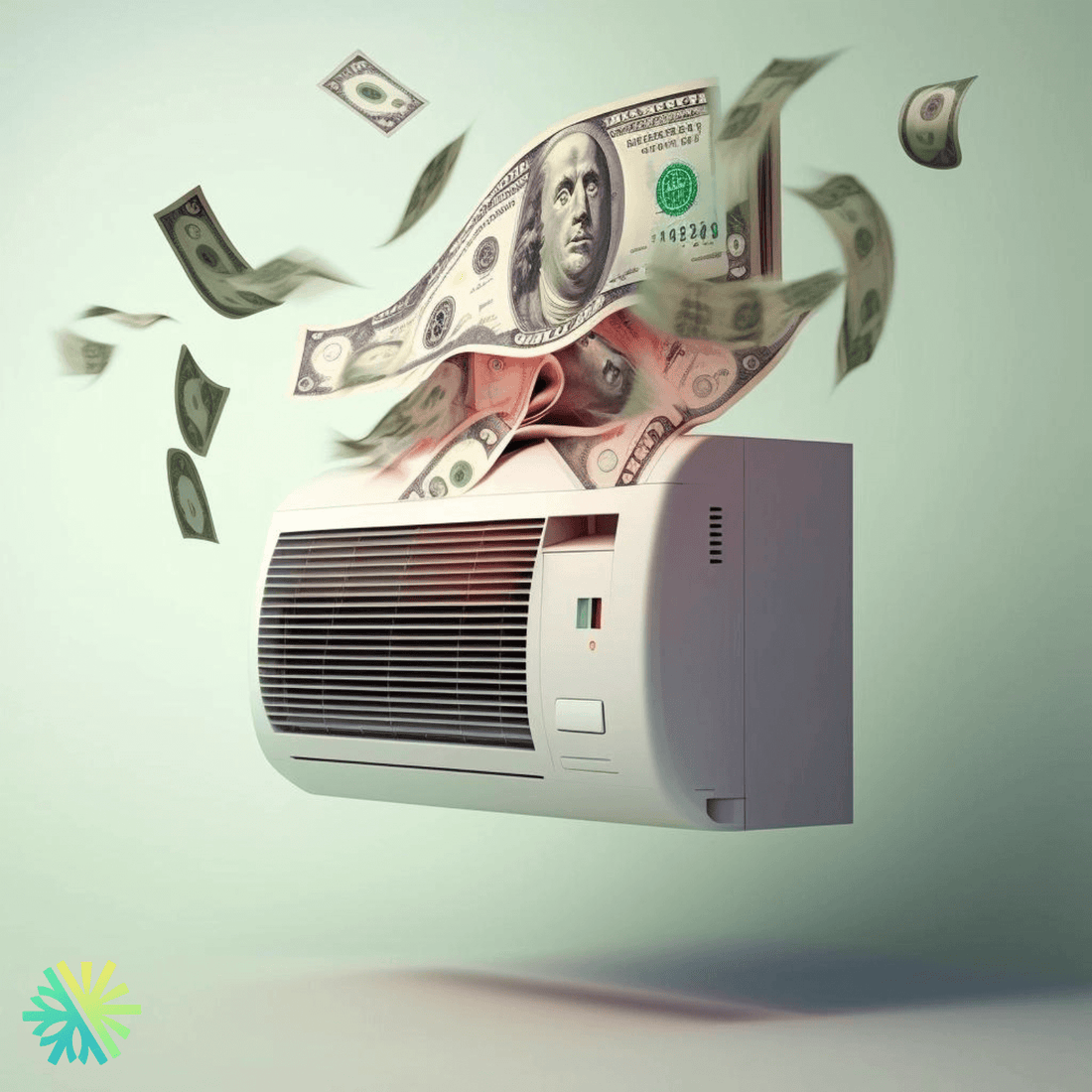
💡 At AirGreen, an informed customer is a satisfied customer!
When it comes to purchasing a wall-mounted heat pump , it is important to know that each company operates differently when it comes to pricing. At AirGreen , we have a transparent and simple policy to help you make the best possible choice.
A transparent and fair pricing policy
At AirGreen we offer a clear and inclusive pricing system. Our machines are always sold with a standard installation , which includes:
- 15 feet of piping and 15 feet of electrical wire
- The disconnect , the rack on the wall and the electrical connection
- Complete start-up of the machine
If your installation is simpler, such as a replacement, we naturally apply a discount. If it is more complex, a supplement is added, but everything is detailed in advance . We offer each customer a free on-site quote and a grid of possible supplements, so that you are fully informed before signing a contract.
-
Comparing prices: pay attention to details
When it comes to pricing, it’s essential to understand what you’re actually buying. Many customers share quotes from other companies with us and ask why prices vary so much. In our experience, there are three main factors that influence these differences:
- The machine installed
A single brand may have multiple models, ranging from entry-level to high-end. For example, a well-known Japanese brand may offer entry-level models, while a Chinese brand may have high-end models that perform very well.
Often a customer thinks they are getting a high-end machine at an incredibly low price, but it is actually an entry-level model, so it is crucial to compare apples to apples!
- Labor warranty
Labor warranties can range from 1 to 12 years depending on the contractor. However, not all warranties are created equal. Some include hidden fees , such as travel or diagnostic fees, even under warranty.
Ask the right questions: "If my heat pump breaks in 7 years, how much will I have to pay?" It's better to know these details before purchasing to avoid unpleasant surprises.
- Subsidies: A key to reducing your costs
An often overlooked but essential aspect is the machine's eligibility for subsidies . Sometimes a customer is attracted to a very low-end machine at an attractive price, without realizing that he would have paid even less in the end with a more high-end machine, eligible for a much higher subsidy.
For example, at AirGreen, we offer a low-cost machine with a one-year labor warranty that qualifies for a subsidy of just $300 . On the other hand, we also offer a high-end Japanese machine with a 10-year labor warranty that qualifies for a subsidy of over $2,600 . Although it costs $2,000 more to purchase, the subsidy and superior quality more than make up for it.
That's why we take the time to talk with our customers , explain the reasons behind these price differences, and provide them with all the tools they need to make an informed decision.
-
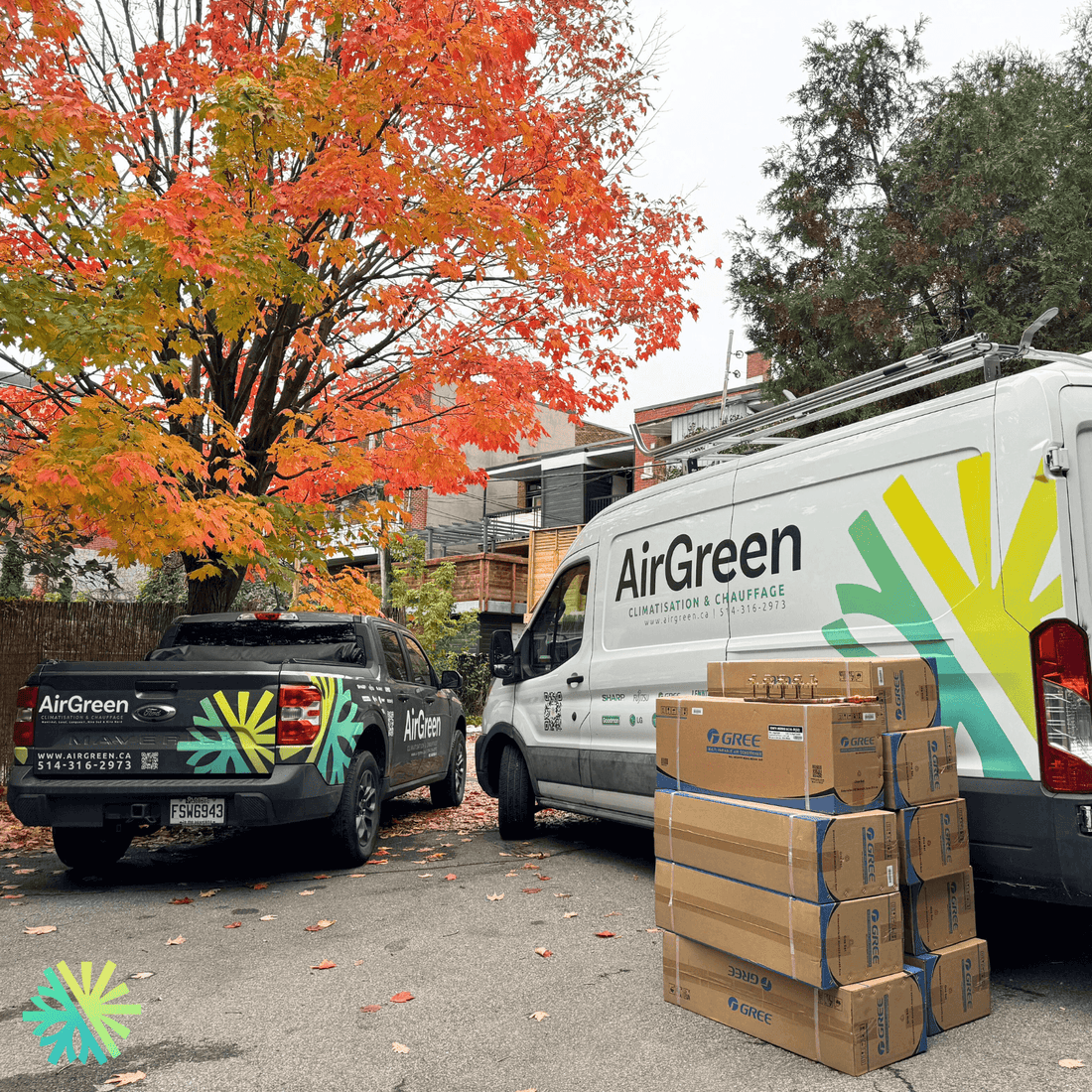
Why choose AirGreen?
At AirGreen , we simplify the process by
offering you:- A fair price match policy
- Professional installation carried out by certified technicians
- Full transparency on costs, guarantees, and subsidies
Expertise that helps you choose the right machine, adapted to your needs
In summary, the price of a wall-mounted heat pump is not limited to the amount displayed. It depends on many factors, including the quality of the machine, the labor warranty and eligible subsidies. At AirGreen, we are committed to providing you with a simple, transparent and personalized experience. Do not hesitate to contact us to discuss your project and get a free quote!

The guarantee: Understanding the nuances to make the right choice
Warranty is a crucial aspect when purchasing a wall-mounted heat pump , but it can be confusing. Not all warranties are created equal, and it’s important to understand the different options available to avoid unpleasant surprises. Here’s a step-by-step guide to help you see things more clearly.
Three types of warranties: Parts, Compressor and Labor
- When purchasing a heat pump, there are three main things to consider:
Warranty on parts
- Usually offered by the distributor, it covers parts of the machine that are likely to wear out or break over time.
- Its duration varies from 1 to 12 years depending on the contract between the distributor, the manufacturer, and an insurance company.
The warranty on the compressor
- It is also managed by the distributor and follows the same principles as that on parts.
Labor warranty
- This is where things get tricky, because distributors are not required to offer a warranty on labor. This creates a huge disparity in the market, and every company operates differently.
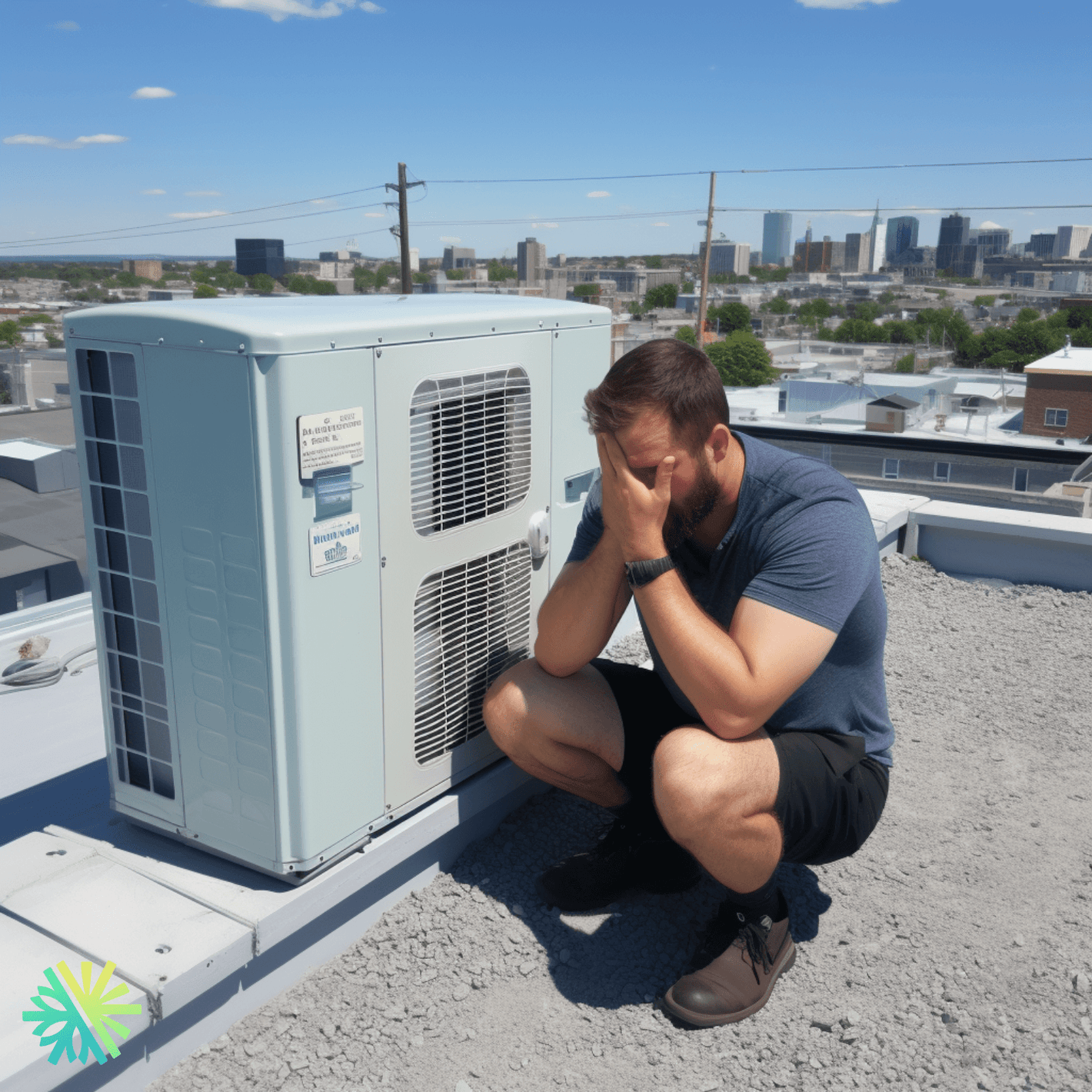
The Three Types of Labor Guarantees
1. Guarantee via Prime Assurance
This is the most widespread warranty in Quebec. It is provided by an external company (such as Prime Assurance) which covers the labor costs for repairs, but with certain limitations.
Often, travel or diagnostic fees (between $100 and $200) are not included, which can surprise customers. Tip: Always ask your contractor to clarify these fees before purchasing!
2. Hybrid warranty (distributor + contractor)
Some companies, like AirGreen , have special agreements with their distributors. For example, we are a Gold dealer for Sharp , which means that travel and diagnostic costs are covered by Sharp for the entire warranty period (10 years).
This approach is beneficial for customers because it eliminates unexpected costs. However, it is crucial to inquire about these agreements before finalizing your purchase.
3. Home warranty
Offered directly by the company that installs your heat pump, this warranty is based entirely on the reliability and sustainability of the company. If the company ceases its activities, this warranty becomes void.
Important note: Even if you opt for a type 1 or 2 warranty, if the contractor who installed the machine is no longer there, you may encounter difficulties. So, just be careful: one warranty is not necessarily better or worse than another, you just have to understand them well.

A guarantee adapted to your needs
At AirGreen, we offer great flexibility to meet the specific needs of our customers by offering the three types of guarantees available:
For customers looking for a cost-effective option, a shorter warranty may be ideal, offering a lower upfront price while still covering the essentials.
For customers wanting complete peace of mind, our 10-year “Gold” warranties include everything at no extra cost, even in the event of unforeseen circumstances.
For those who are hesitant, we take the time to clearly explain the differences between each type of warranty, so you know exactly what you are getting.
💡 At AirGreen, we ensure that each customer fully understands the guarantees associated with their purchase and can choose the one that best suits their needs.
Why is warranty so important?
The average lifespan of a well-maintained heat pump is 10 to 15 years. However, it’s not just the quality of the machine that matters, but also the quality of the support in the event of a problem. A well-defined warranty, with clear fees and solid protections, can make all the difference between a hassle-free experience and an administrative nightmare.
Over our years of experience, we have found that a customer who is well informed about what they are actually buying, as well as the different options available, is always more satisfied with our services. People have no problem paying or not paying for certain options, but what they hate most of all is believing that they have bought something, when in reality, it is something completely different.
In summary, ask the right questions, find out about the warranty details (parts, compressor, and labor), and make sure you work with a reliable and transparent company like AirGreen.
Please feel free to contact us to discuss your heat pump and warranty needs, and we will be happy to guide you!
Understanding the Build Quality of Wall-Mounted Heat Pumps: Beyond the Machine
-
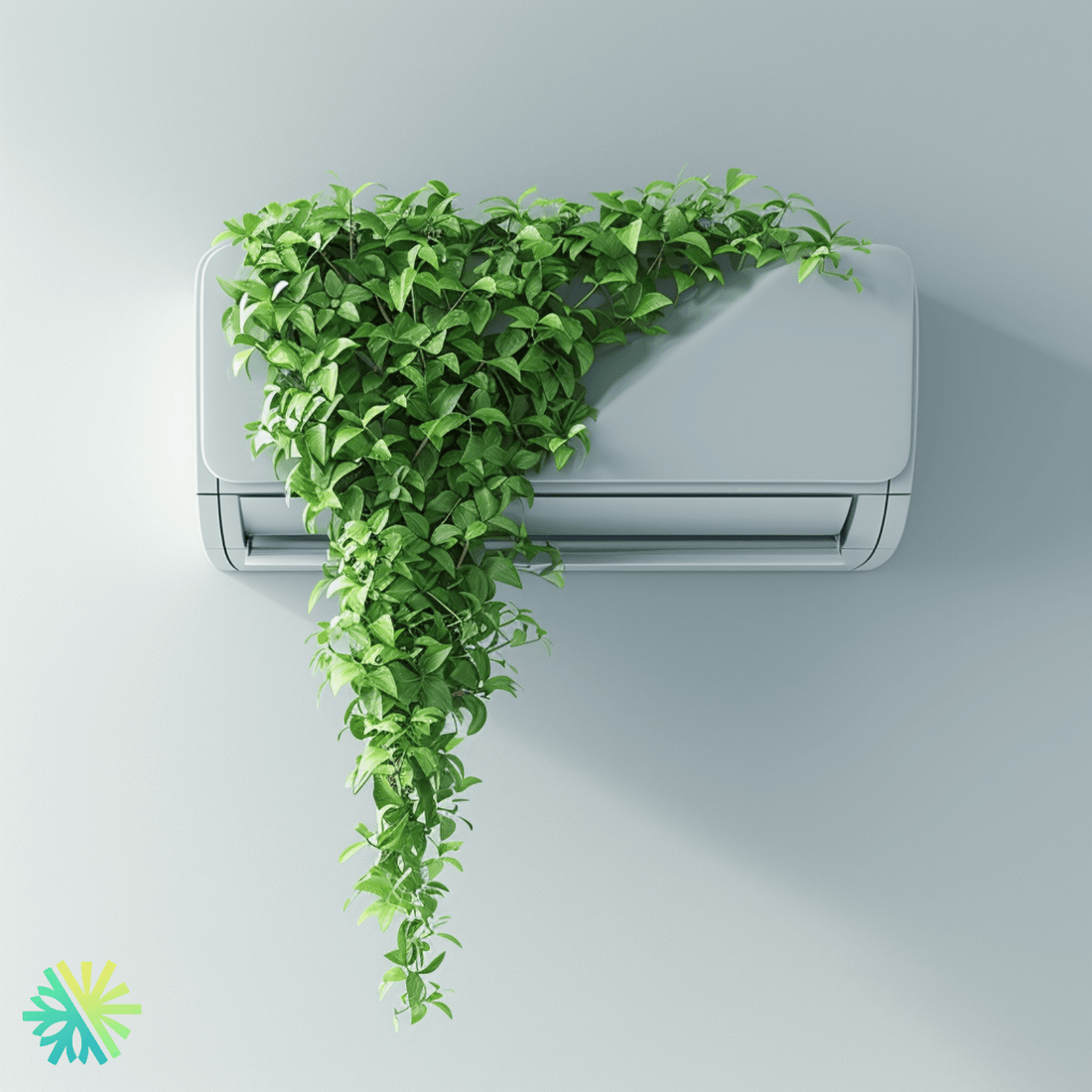
column
When it comes to choosing a wall-mounted heat pump , the question of manufacturing quality is often at the heart of concerns. However, it is not enough to rely on the name of a brand or the appearance of a device. The durability and performance of a heat pump depend on a complex combination of factors: the climate where it is installed, the quality of the components, the experience of the manufacturer, and above all, the expertise of the contractor who installs it.
At AirGreen , we have learned, over the years and thousands of installations, that a heat pump is not simply a product, but a promise: that of meeting the unique needs of each customer, while resisting the challenges of the Quebec climate. It is this approach that has allowed us to evolve, to understand the strengths and weaknesses of the different machines, and above all, to develop a philosophy centered on transparency and customer satisfaction.
-
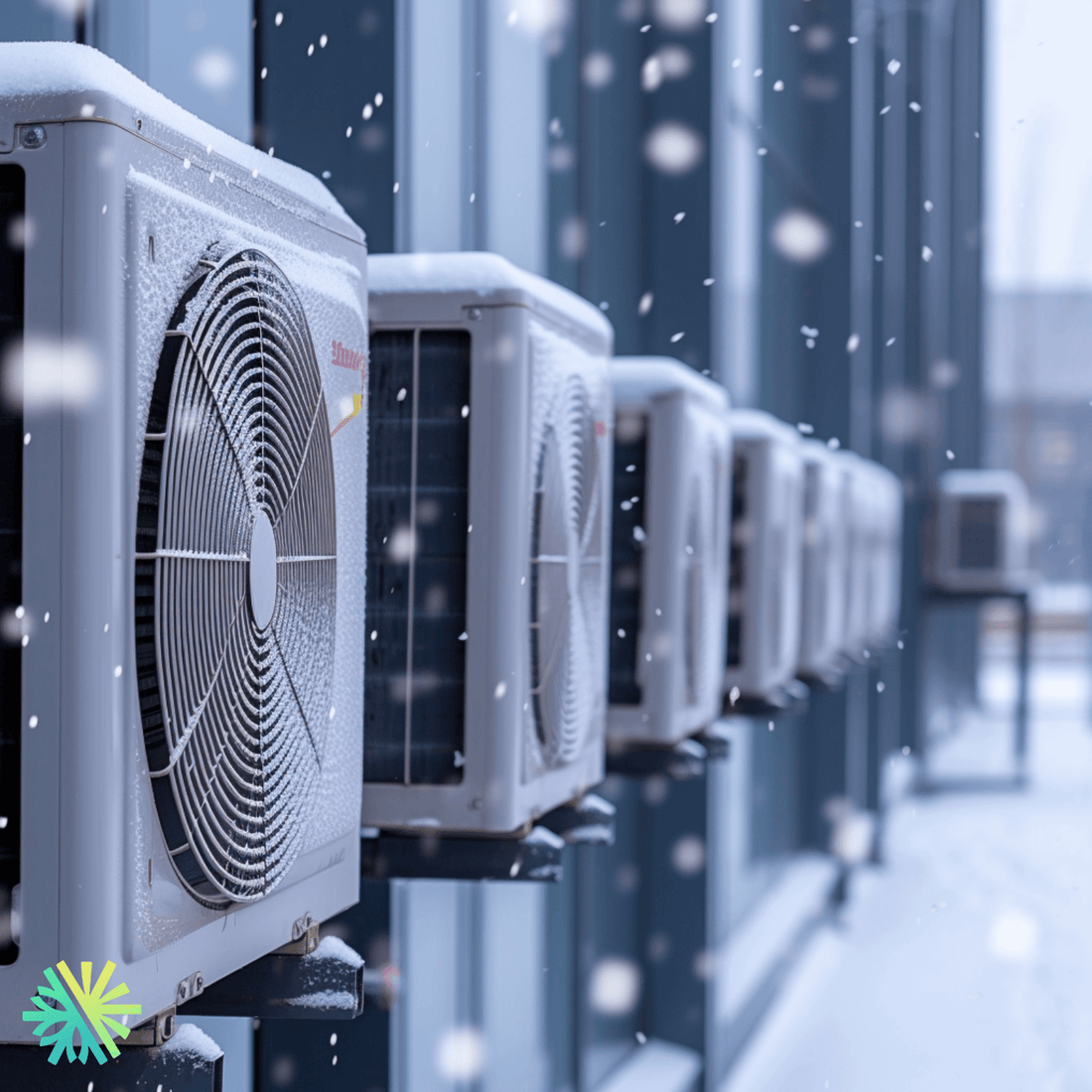
Why do some heat pumps fail in the Quebec climate?
Manufacturing quality plays a key role in the durability of heat pumps, but it is often put to the test by Quebec's extreme conditions.
- Climate unsuitability: Many devices designed for other markets (Europe or Asia) cannot withstand the freezing temperatures of our winters. Poorly adapted mechanical and electronic parts break down quickly.
- Local experience: Well-established brands like Fujitsu, Sharp, Gree and Midea have adapted their products over the years. They offer proven solutions, adapted to our climate.
-
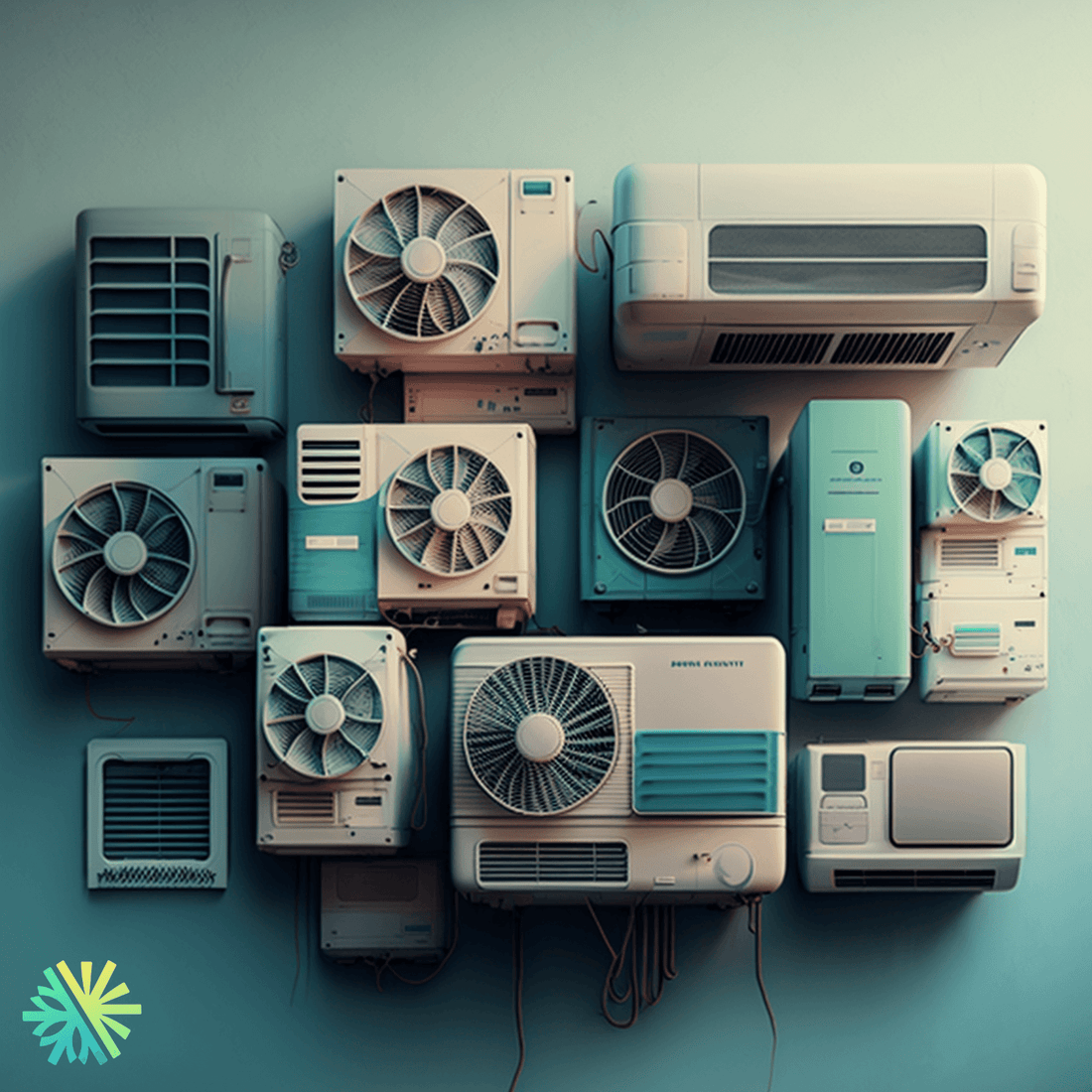
Lessons learned from our experience at AirGreen
Our journey began modestly, with the importation of generic heat pumps directly from
China in 2012. We learned quickly that a brand name inspires trust and ensures better follow-through for the customer. Here are the key lessons we learned:1. Manufacturing is never local. Even Japanese brands produce their machines in other Asian countries (Thailand, Taiwan, South Korea), but rarely in China.
2. Each brand has its strengths and weaknesses. A 12,000 BTU model may be excellent, while the 18,000 BTU model in the same range may be disappointing. Field experience is essential to tell the difference.
3. Japanese machines break less often, but… Their price is not always justified. They must be evaluated according to the real needs of the customer.
-
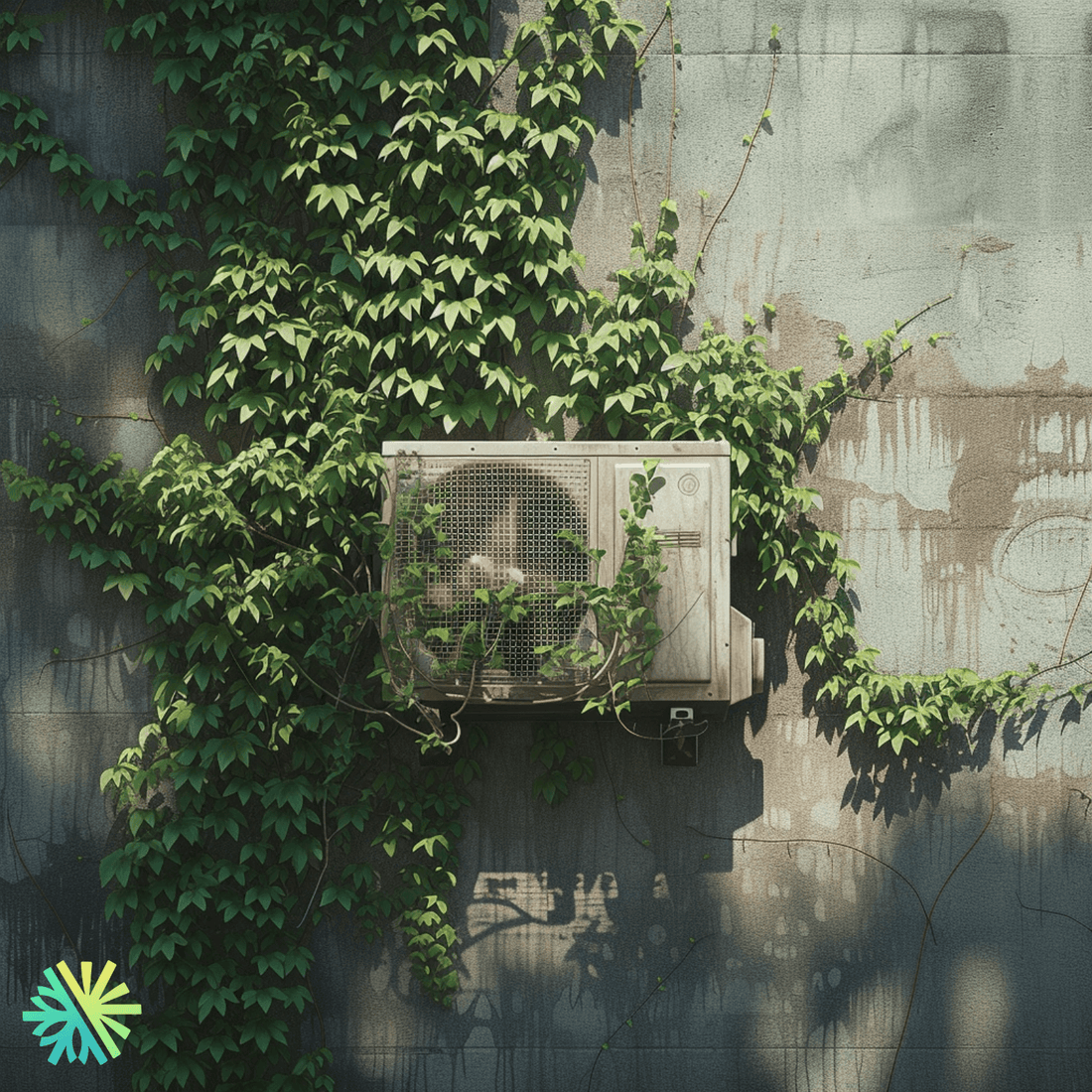
column
4. Bad runs happen. Even the best brands can produce a bad batch. It’s just a fact of life in manufacturing.
5. Installation is paramount. Some distributors sell their products to all contractors without performing any qualification checks or quality control. This leads to a higher frequency of breakdowns, not because of the machine itself, but because of poorly executed installations.
6. Chinese giants dominate the market.
-Gree manufactures brands like Tosot, Ameristar, and Trane (mini-split), etc.
-Midea is behind Carrier, Lennox, Moovair, Arcoaire, Comfortmaker, and Tempstar, etc.
7. Distributor service makes all the difference. A machine can break, but a responsive distributor can turn a bad experience into a satisfied one. Some distributors stand out by offering complete replacement systems so customers don’t have to wait, and they do it without complications. For example, some of our partners immediately replace defective machines or provide emergency parts to protect their reputation and ensure customer satisfaction. This type of service goes well beyond the standard warranty and shows the importance of choosing a reliable and committed distributor.
-
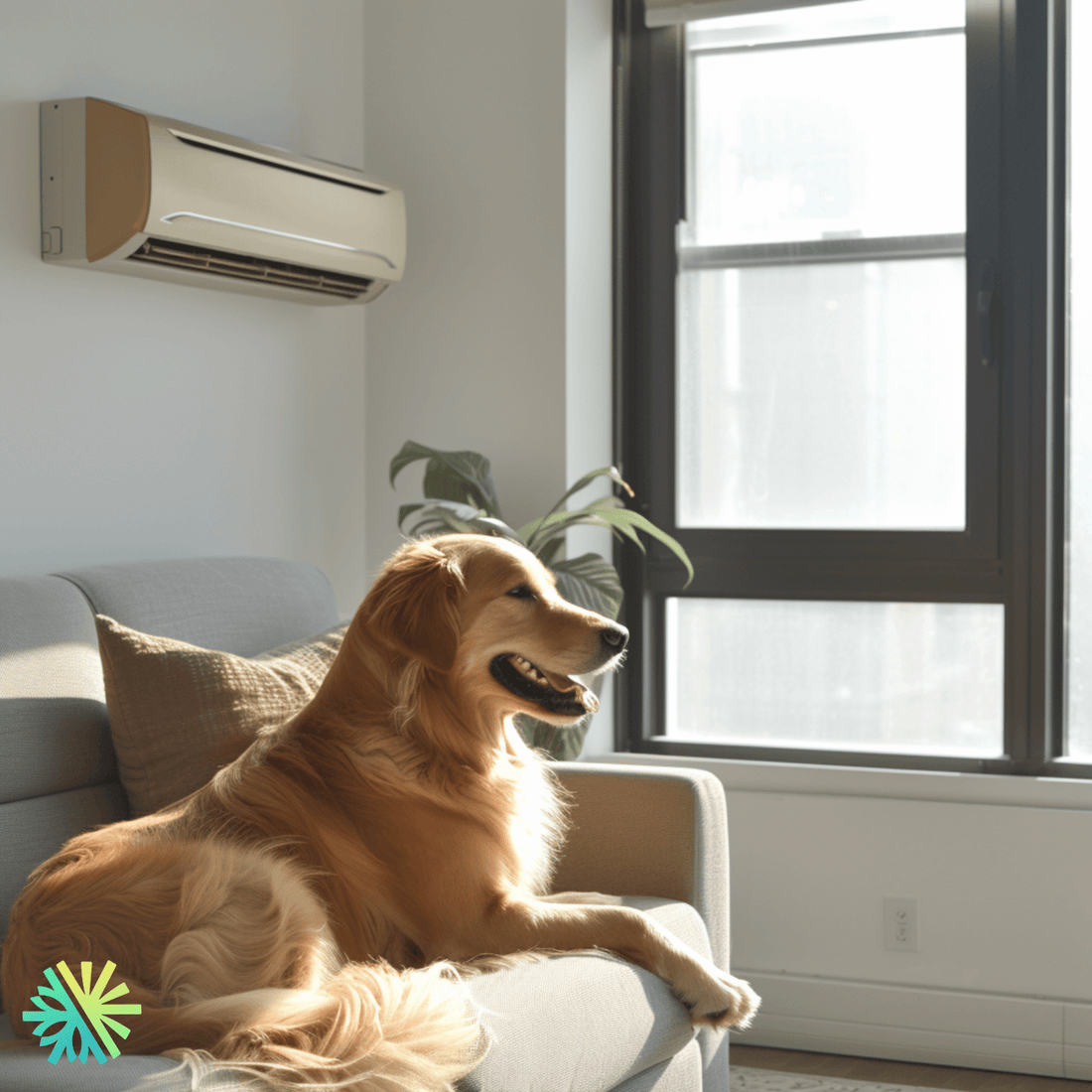
column
8. Warranty isn’t everything, but service is. It’s not just the promise of a warranty that matters, but whether, if something goes wrong, you’ll have someone to answer and help you. At AirGreen, that’s exactly what we promise. If your machine breaks, we’ll be there. We promise to respond quickly, find a solution, and support you throughout the process. Whether it’s a part that needs replacing or an urgent repair, we’ll never leave you without support. With AirGreen, you can be sure that your comfort and peace of mind will remain our priority, even years after installation.
9. The quality of after-sales service does not only depend on the machine, the brand, the distributor or the installer, but on an amalgam of all these elements, and even on the relationship between the different actors. At AirGreen, we have already had mixed experiences with some distributors, but we have learned that investing in these relationships can be a game changer. By increasing our purchasing volumes and building strong and lasting relationships, we have seen a clear improvement: parts now arrive much faster, and small favors are done on both sides. These trusted relationships not only allow us to solve problems efficiently, but also ensure a better experience for our customers. This underlines the importance of a harmonious collaboration between the distributor, the contractor and the brand to offer after-sales service that exceeds expectations.
-
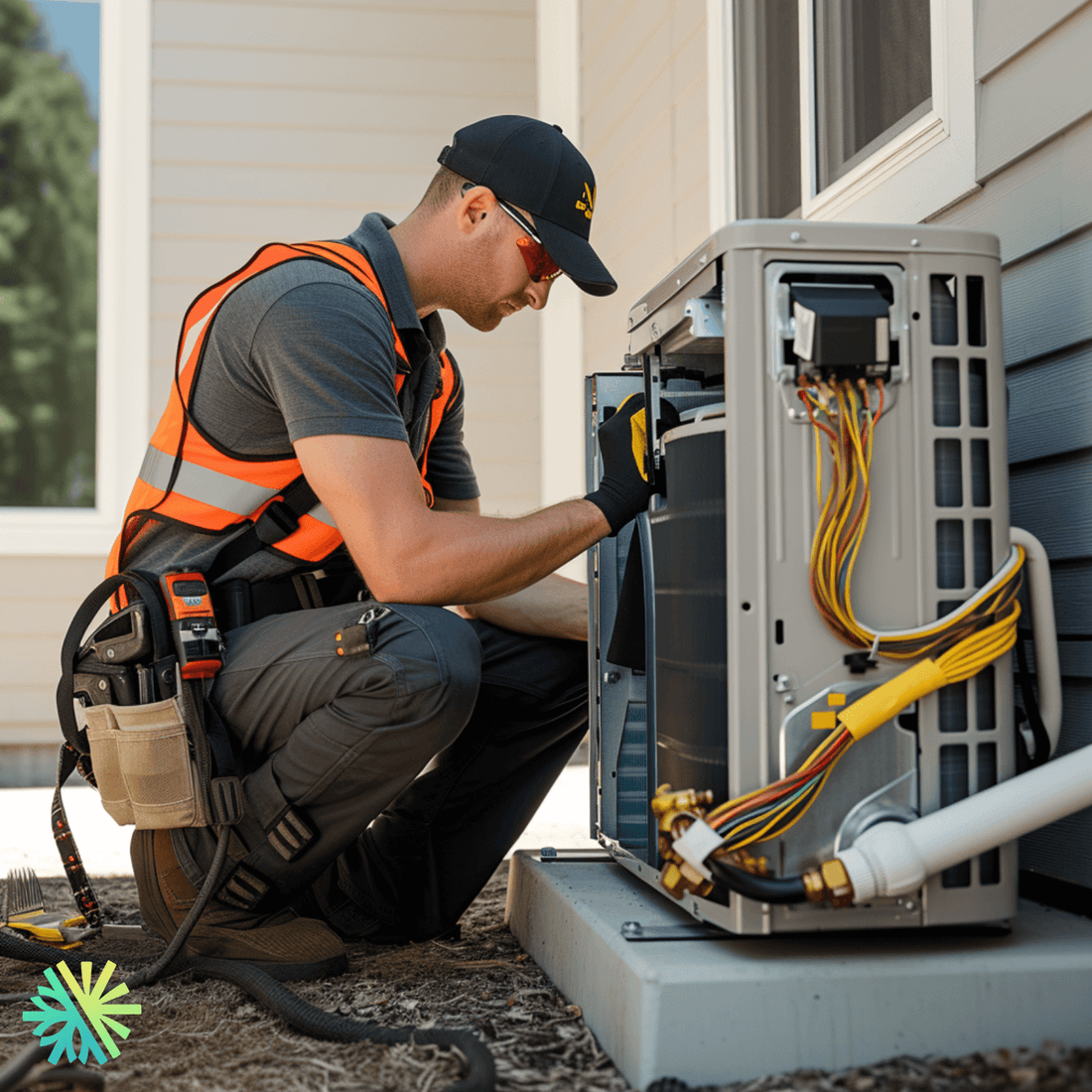
Our commitment at AirGreen
We know that not all heat pumps are perfect, and that no brand is immune to the unexpected. But what we do guarantee is constant support for our customers. No matter the brand or model, we work with reliable distributors and offer after-sales service that meets your expectations.
At AirGreen, your satisfaction is our priority , and we do everything we can to ensure that your heat pump provides you with the comfort and peace of mind you deserve.
Contact us to discover our personalized solutions!

Comparative table of wall-mounted heat pumps
The comparison table below is the result of AirGreen's direct experience, accumulated between 2014 and 2024. During this decade, we worked with a wide variety of brands and models, as well as with different distributors. This field work allowed us to identify the strengths and weaknesses of wall-mounted heat pumps in a unique Quebec context.
This table aims to provide you with a clear and informative overview , highlighting the essential elements to consider before making a purchase: reliability, performance, energy efficiency, and much more. However, it is important to keep in mind some key points:
Important points to consider:
1. Data based on our experience:
The information presented in this table is taken directly from our observations and expertise. It does not come from a scientific study, but from our interactions with manufacturers, distributors and customers.
2. Inherent biases:
The quality of after-sales service can vary considerably depending on the relationships between the different players: manufacturers, distributors, and installers. For example, at AirGreen, thanks to our established relationships with certain distributors, we have access to faster and more efficient services, which naturally influences our experience with certain brands.
3. A general guide, not an absolute truth:
This table is designed to provide a general idea of how brands and models perform. However, it is essential to consider your specific needs and speak with an expert to get personalized recommendations.
4. The importance of installation:
No matter how good the machine is, a poorly executed installation can significantly reduce its durability and performance. Conversely, a professional installation can optimize a machine, even if it is considered mid-range.
Energy Efficiency Ratings – What’s New! (HSPF2, EER2, SEER2 and COP)
In recent years, new energy efficiency standards have come into effect, including SEER2 , HSPF2 , and EER2 , replacing the old SEER, HSPF, and EER ratings. These new measures take into account changes in HVAC systems as well as more rigorous testing methods. Here is a detailed guide to understanding these new ratings, how they differ from the old ones, and why they are important, especially in a climate like Quebec's.
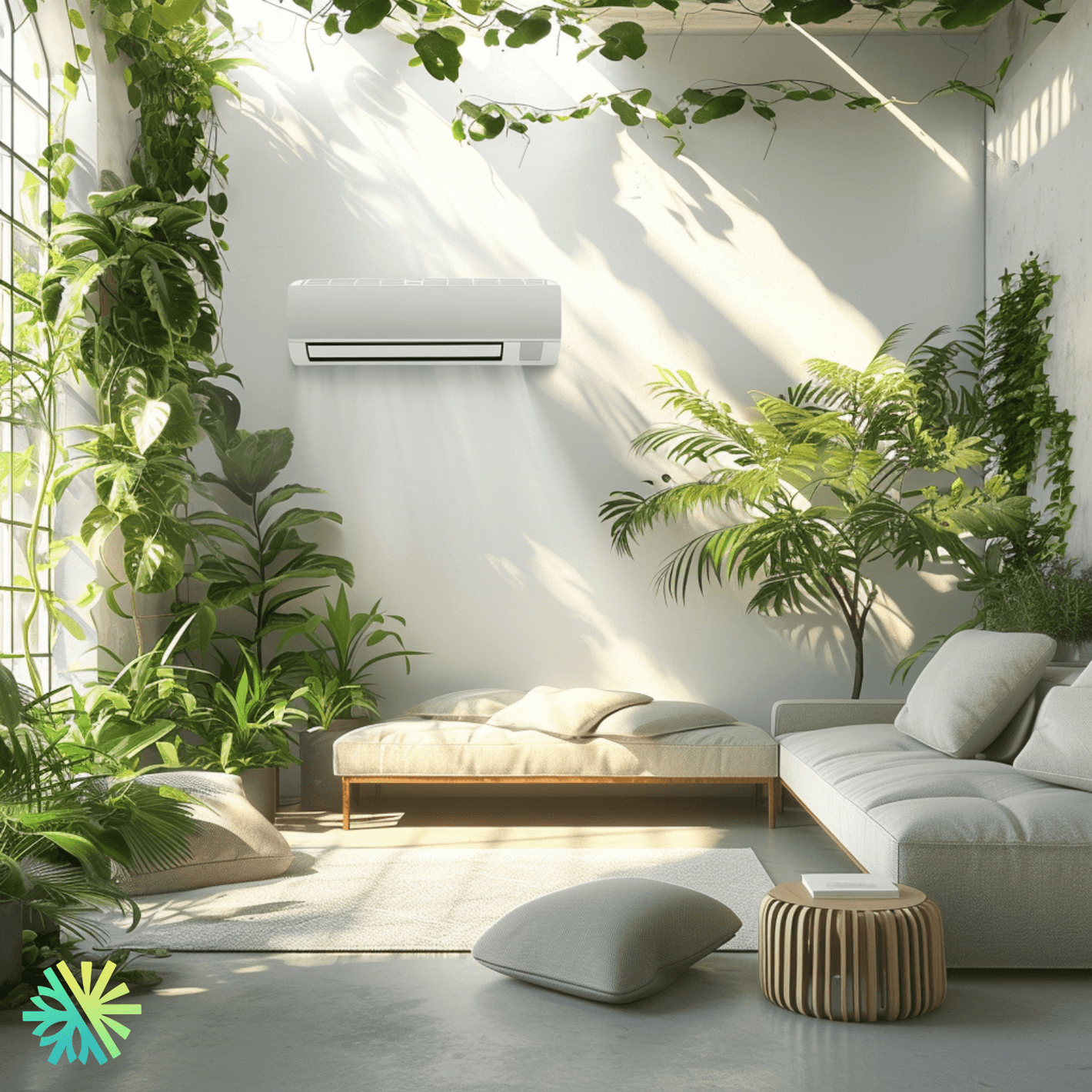
What is SEER2 and how is it calculated?
SEER2 ( Seasonal Energy Efficiency Ratio 2 ) is the key indicator of the energy efficiency of air conditioning units (SEER in French). It replaces the old SEER by offering a more precise and realistic measurement thanks to the new M1 Testing Standards. These tests take into account real-life conditions of use, in particular energy losses due to the resistance of air ducts, making the data more reliable.
- Difference between SEER and SEER2
SEER2 is 4-5% lower than SEER for the same appliance, not because the appliance is less efficient, but because testing is now more rigorous. SEER was based on best-case scenarios, while SEER2 reflects realistic operating conditions.
- Why is SEER2 important to you?
In Quebec, where air conditioning is used only a few months a year, a high SEER2 rating can save energy during hot summers. If you are planning a long-term investment, choosing a unit with a high SEER2 rating can be cost-effective, especially if grants are available.
- Practical example:
An appliance with a SEER2 of 18 uses approximately 15 to 20% less energy than an appliance with a SEER2 of 14, saving you money on your summer bills each year.
- Should I prioritize a high SEER2?
It depends on your plans:
- Short term use? An average SEER2 may be sufficient.
- Long term use? A high SEER2 provides cumulative savings and better performance.
- In conclusion
The SEER2 reflects the real efficiency of your device, an essential criterion for an informed choice. At AirGreen, we are here to guide you and help you maximize your investment, taking into account your specific needs and your budget.

What is EER2 and how is it calculated?
The EER2 ( Energy Efficiency Ratio 2 ) is a key indicator for measuring the energy efficiency of an air conditioning unit. Unlike the SEER2, which is an average over a season, the EER2 is calculated under fixed conditions that simulate heat peaks, allowing for an accurate assessment of performance in demanding situations.
How is EER2 calculated?
The calculation of EER2 is based on strict conditions:
Outside temperature : 35°C, simulating particularly hot days.
Indoor temperature : 26°C, ensuring optimal comfort inside.
Relative humidity : 50%, a common level in summer.
These rigorous parameters allow for better comparison of devices without the influence of seasonal variations. Additionally, with M1 Testing Standards , testing better reflects the real-world challenges your device will face.
Difference between EER and EER2
The EER2 is approximately 4-5% lower than the old EER for the same device, due to more demanding testing. These more realistic results are particularly useful for understanding how a device performs under extreme temperatures.
Practical example:
Imagine two devices, one with an EER of 12 and the other with an EER2 of 11.5 . Although the number is lower for the EER2, the device is not less efficient: it simply shows that the test is more accurate.
Why is EER2 relevant to you?
The EER2 is especially useful if you live in an area where summer temperatures are often high, such as Montreal during July heat waves. A device with a high EER2 will consume less energy while maintaining a comfortable temperature, even on the hottest days.
Comparison :
An appliance with an EER2 of 14 will use approximately 20% less energy than an appliance with an EER2 of 11 , which can translate into significant savings on your summer bills.
-
EER2: a tool for technicians and consumers
EER2 is often the preferred metric among technicians, as it provides a direct assessment of a device's actual performance under thermal stress. It is a must-have for those who want to compare devices accurately, without being influenced by variable factors such as seasons.
Conclusion :
EER2 is an essential measure for choosing a device that can meet your energy needs, even in difficult conditions. At AirGreen, we help you understand these indicators so that you can make an informed choice, adapted to your situation and your budget.
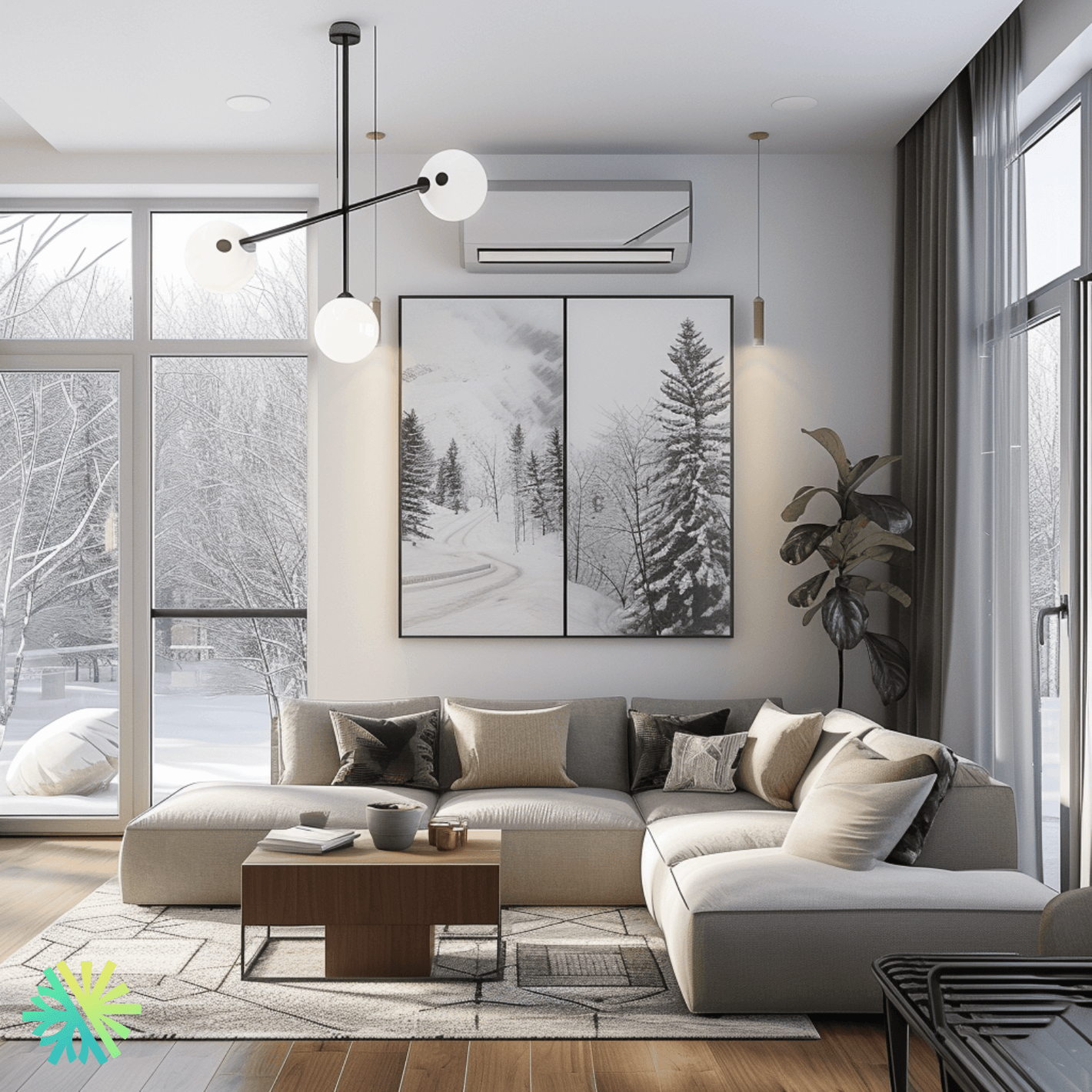
What is HSPF2 and how is it calculated?
HSPF2 ( Heating Seasonal Performance Factor 2 ), or FRSC2 in French, is the new standard for evaluating the energy efficiency of seasonal heating devices. With the introduction of M1 test methods, HSPF2 provides a much more realistic view of heat pump performance in winter, particularly in harsh climatic conditions such as those in Quebec.
How is HSPF2 calculated?
The HSPF2 measures the amount of heat produced by a device in relation to the energy it consumes. Here are the parameters used for its calculation:
-Indoor temperature : 20°C, to simulate a comfortable environment.
-Average outdoor temperature : 8°C, but additional testing may be performed at temperatures down to -15°C to evaluate the performance of models designed for cold climates.
These tests provide a precise indicator of performance in real conditions, including during intense cold spells.
Difference between HSPF and HSPF2
With the new M1 test standards, the HSPF2 is approximately 15% lower than the old HSPF for the same appliance. This does not mean that the appliance is less efficient, but rather that the new methods better account for real energy losses, such as those caused by air ducts or frost on the outdoor unit.
Concrete example:
A device with an HSPF of 10 would now have an HSPF2 of around 8.5 , but its actual performance remains the same.
-
Why is HSPF2 so important in Quebec?
In Quebec, where winters are long and harsh, heating represents a significant portion of your energy bills. Investing in a device with a high HSPF2 can significantly reduce your costs while increasing your comfort.
Comparison :
-HSPF2 of 8.5: Device meeting the minimum requirements in Quebec, ideal for
tighter budgets.
HSPF2 10.5 or higher: Considered high-end, this device can reduce your
heating bills up to 30% compared to models
standards, while delivering superior performance in
freezing temperatures.
An indicator not to
not to neglect
Unlike the SEER2, which is mainly relevant for summer air conditioning, the HSPF2 plays a key role in choosing a heat pump suitable for Quebec winters. Devices with a high HSPF2:
Consume less energy while generating more heat.
Are often built with higher quality components, ensuring greater durability.
What this means for you
Investing in a device with a high HSPF2 is a strategic decision, especially if you plan to stay in your home for several years. For example:
A heat pump with an HSPF2 of 10.5 can save you thousands of dollars over its lifetime, while potentially qualifying for higher subsidies.
Devices with high HSPF2 rates are often eligible for the best financial assistance programs, such as those offered by Hydro-Québec and LogisVert.
-
Conclusion: the AirGreen promise
At AirGreen, we understand the importance of a HSPF2 that fits your needs and budget . That's why we take the time to explain the performance of each model, so you can make an informed choice, with confidence.
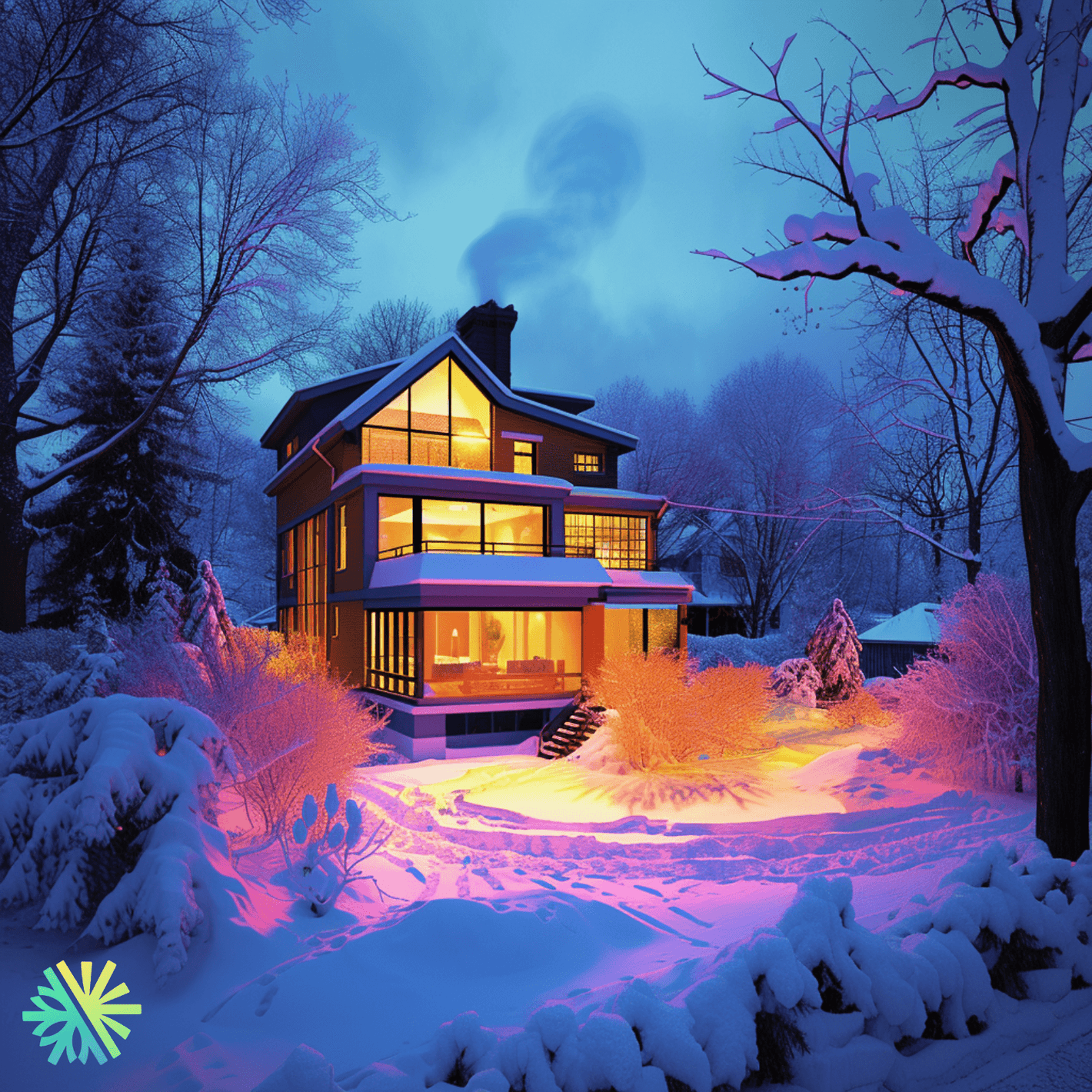
What is COP and why is it important?
COP ( Coefficient of Performance ) is a key indicator of a heat pump’s energy efficiency, measuring how much heat is produced relative to the energy consumed. Unlike SEER2 or HSPF2, which evaluate overall efficiency over a season, COP focuses on instantaneous performance at specific temperatures. It’s a valuable tool for comparing heat pumps, especially in extreme climates like Quebec’s.
How is COP calculated?
The COP is the ratio between the amount of heat produced (in kWh) and the electrical energy consumed (in kWh). It is calculated at different outdoor temperatures to evaluate the performance of an appliance in various winter conditions.
Examples of COP:
-COP from 3 to -8°C: This means that for each kWh of electricity consumed, the heat pump produces 3 kWh of heat.
-COP from 2 to -15°C: Even in freezing temperatures, the device remains efficient, although performance decreases with cold.
These data demonstrate how heat pumps can provide an energy-efficient heating solution, even in winter.
The difference between COP and HSPF/HSPF2
While the HSPF2 provides an assessment over an entire heating season, the COP provides a detailed analysis of performance at specific times, particularly at very low temperatures. It is a crucial indicator for consumers looking for a heat pump that performs well during the colder months.
COP: The point of distinction between Japanese and Chinese machines
The COP often highlights major differences between Japanese and Chinese machines , which are not always evident through SEER2 or HSPF2 ratings. Japanese heat pumps, for example, are generally much more efficient at heating, which can make a huge difference in a climate like Quebec's.
Why do Japanese machines stand out?
-Advanced technology: Japanese manufacturers are investing heavily in the development of components optimized for low temperatures.
-Cold performance: Japanese machines often maintain a COP above 2 even at -20°C, while some Chinese machines struggle to achieve these results.
-Quality of materials: The parts used by Japanese brands are designed to last and withstand the most extreme conditions, ensuring better long-term reliability.
Why the COP is crucial in Quebec
In a province where heating represents a significant portion of energy expenditure, COP is a decisive factor. A heat pump with a high COP guarantees reduced heating costs, while providing optimal comfort during long winter periods.
Economy comparison:
A heat pump with a COP of 3 at -10°C consumes 50% less energy than a device with a COP of 2. This can represent substantial savings over an entire season.
Japanese machines, although often more expensive to purchase, more than compensate for their initial price with superior heating performance.
Choosing the right heat pump with AirGreen
-
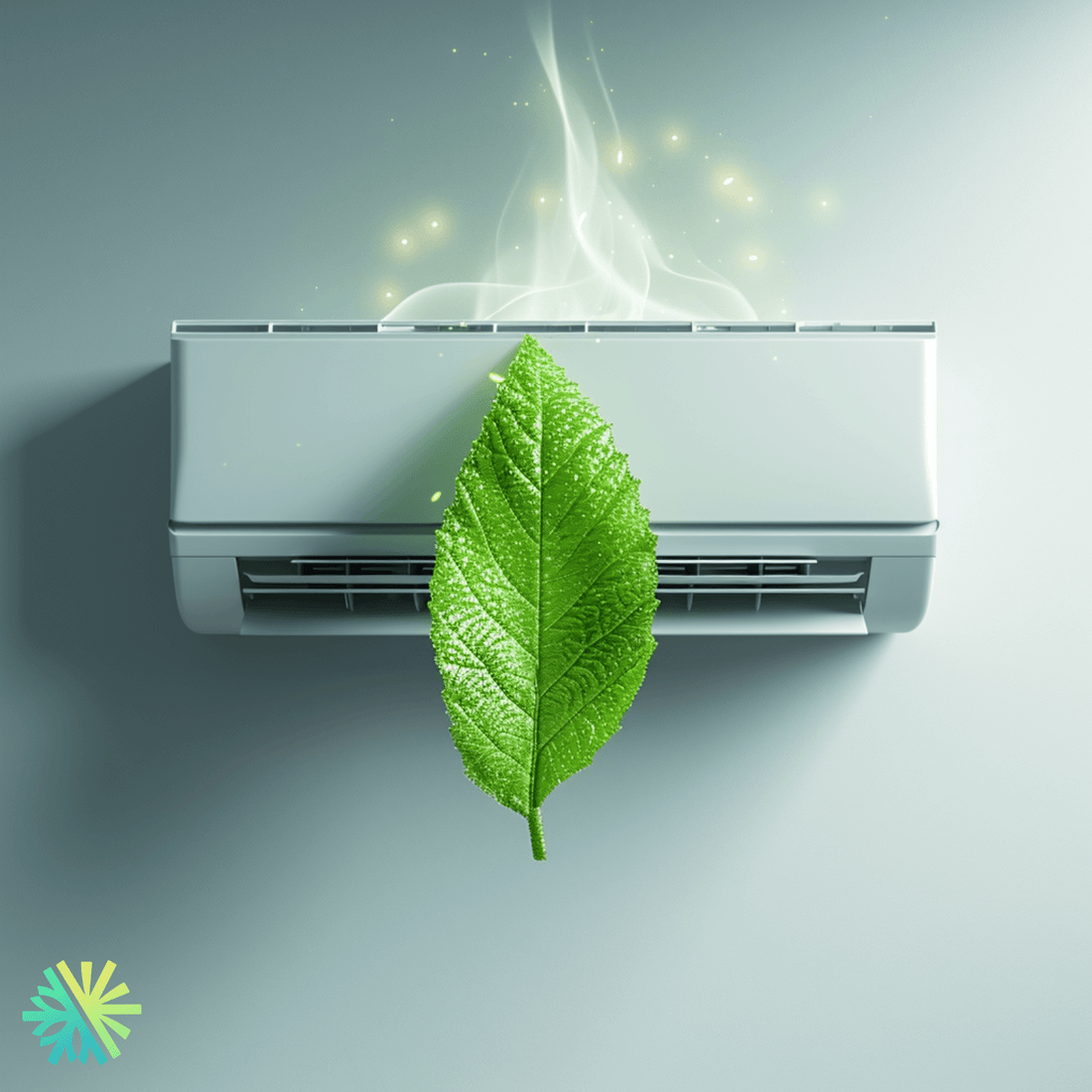
column
At AirGreen, we make it a point to analyze the COP of each device we offer. We help our customers understand how these numbers translate into real savings, while taking into account their budget and specific needs.
The COP is not just a number: it is a promise of performance and efficiency, an essential criterion for worry-free Quebec winters.
Why are these new odds important?
-More realistic and rigorous standards:
SEER2, EER2, and HSPF2 ratings introduce more stringent testing methods, reflecting the real-world operating conditions of appliances. This means the data you see on an energy label is much closer to what you can expect in terms of performance in your own home.-Direct impact on subsidies:
With programs like LogisVert and Hydro-Québec , subsidies will now be more geared toward the most efficient appliances, favoring machines that display high HSPF2 and SEER2 ratings . These subsidies can significantly reduce the initial cost of the appliance, making high-end options much more accessible.-Energy efficiency and long-term savings:
Heat pumps with high ratings use less energy, which not only reduces your monthly bills, but also your environmental footprint. They can also perform better in extreme conditions, which are crucial for regions like Quebec.-Adaptation to specific needs:
A unit with an HSPF2 greater than 10.5 will be ideal for those who want significant savings on heating. However, if your primary use is air conditioning, the SEER2 or EER2 ratings will be more important. It is essential to understand your energy priorities to make an informed choice.-Better profitability forecast:
In the long run, heat pumps with high energy ratings offer a much higher return on investment. Especially for homeowners planning to stay in their home for several years, the higher initial cost is more than offset by significant energy savings. -

Are devices with high ratings worth the cost?
The answer depends on your personal situation:
-If you plan on moving in 2-3 years, opting for an entry-level or mid-range unit may be more economical. You still get the basic benefits of a heat pump, without overpaying for high ratings that you won't benefit from in the long run.
-If you plan on staying for several years, a device with a high HSPF2 becomes a wise investment. The subsidies associated with high-end machines often make these options much more affordable than they seem at first glance.
Hydro-Québec and the evolution of subsidies:
Hydro-Québec has already announced that in 2025, subsidies will be adjusted to give greater priority to highly energy-efficient machines. This means that models with high SEER2, EER2, and HSPF2 ratings will likely receive the largest subsidy amounts, further increasing their attractiveness. These changes encourage consumers to adopt more sustainable and efficient appliances, thereby reducing the province's overall energy consumption.At AirGreen, we support you every step of the way:
We understand that the new standards may seem complex, but at AirGreen, our goal is to simplify the process for you. Our experts take the time to:- Explain to you the differences between SEER2, EER2, and HSPF2.
- Identify the grants you are eligible for to maximize your savings.
- Guiding you to a device that meets your specific needs, while respecting your budget and long-term plans.
- With a thorough understanding of the new standards and the opportunities they offer, you will be able to choose a heat pump that guarantees optimal comfort while optimizing your energy savings. At AirGreen, we help you invest intelligently, for today and tomorrow.
How to choose the right power for your wall-mounted heat pump?
-

column
At AirGreen , we understand that choosing the power of a wall-mounted heat pump is not a simple equation based on the surface area of your home. Each installation is unique, which is why we take a personalized approach, taking into account a multitude of factors to offer you adapted, efficient and cost-effective solutions.
Comfort: a question of balance
To ensure optimal comfort, it’s not enough to simply cool your home to the desired temperature. It’s equally crucial to maintain a relative humidity level between 40% and 50% . A machine that’s too powerful will quickly cool your space without adequately dehumidifying the air, which can create an unpleasant feeling of damp coldness .
Let's take the example of a spacious 1,200 square foot condo:
- Option 1 : A single 18,000 BTU unit. This could cool the space quickly, but may create short cycles that are detrimental to dehumidification.
- Option 2 : Two 9,000 BTU units. This configuration offers better temperature and humidity control, but may represent a higher initial cost.
The goal is to find the perfect balance between cooling capacity and dehumidification efficiency , while respecting your budget.
-
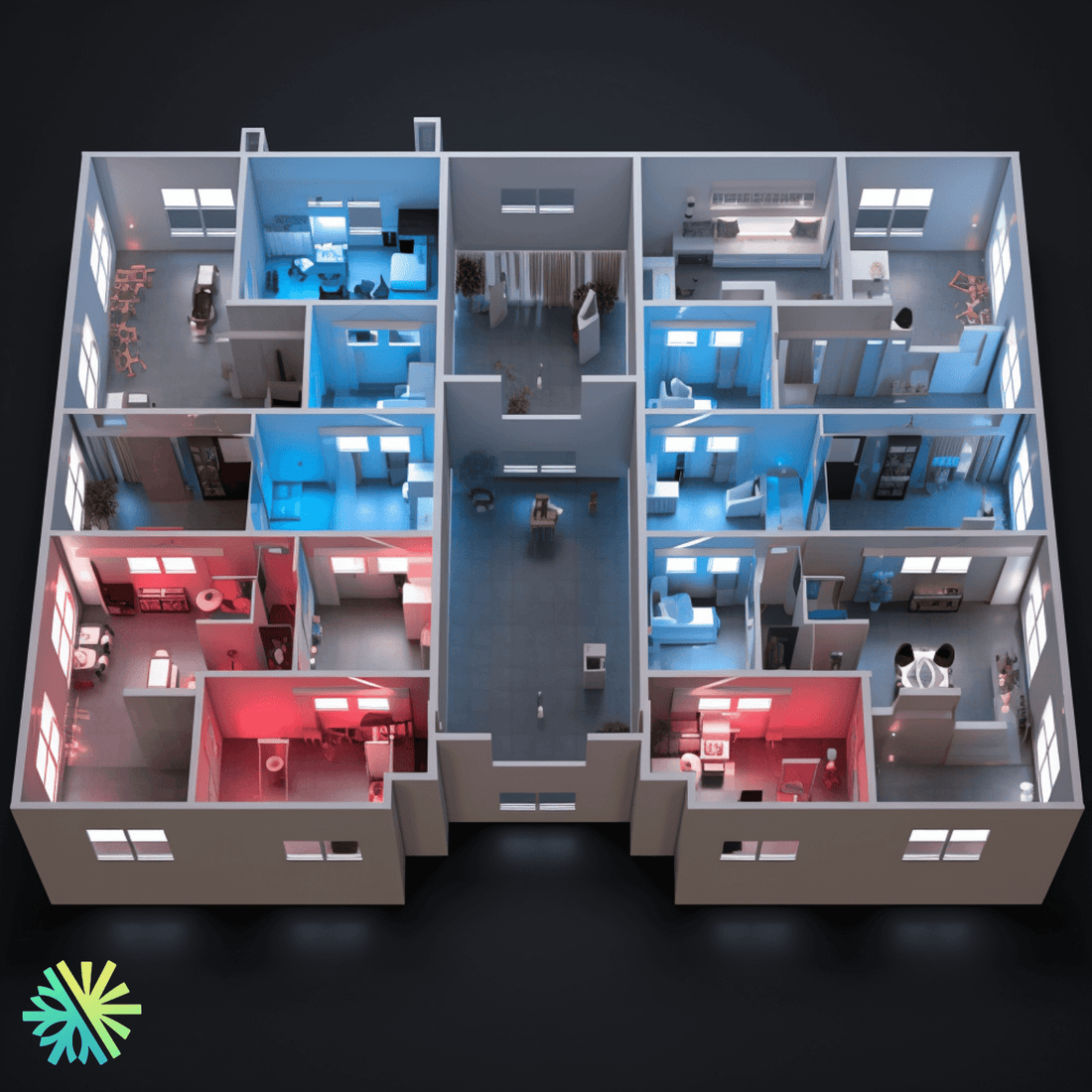
Why a tailor-made approach?
At AirGreen , we analyze each project holistically . The factors we evaluate include:
- The area of your house or condo.
- The height of the ceilings , which can influence the volume of air to be cooled.
- Exposure to sunlight , which plays a key role in heat gain.
- The thermal insulation of your home, which affects temperature retention.
- The layout of the rooms , as an open space differs greatly from a multi-story house with walls and corridors.
Concrete examples of custom installation
Imagine a large condo with several possibilities:
- A 24,000 BTU unit : Effective at covering the entire space, but could cause insufficient dehumidification cycles.
- A dual zone unit (12,000 BTU + 12,000 BTU) : Offers a more even distribution of cold, ideal for separate rooms.
- Three separate units of 9,000 BTU each : The best solution for absolute comfort, but potentially more expensive.
- Two 12,000 BTU units in zones
strategic : A balanced alternative between comfort and cost.
The subtleties of subsidies and guarantees
Another crucial aspect is the available subsidy and associated guarantees :
- A single zone unit may be eligible for a grant of up to $2,500 .
- A dual zone unit could fetch nearly $3,000 .
- Two separate units could offer a cumulative grant of over $5,000 !
So, while a dual zone machine may initially cost more, it could become more cost-effective by factoring in these subsidies. At AirGreen, we help you understand these nuances to maximize your investment.
-

Why does AirGreen stand out?
At AirGreen , we don’t just offer a standard solution or a single machine. We know that the best deal is constantly changing based on many factors. Sometimes, distributors change their prices or adjust warranties mid-season. At other times, Hydro-Québec revises the amounts of subsidies available.
This is why our offering is constantly evolving to adapt to these fluctuations and ensure that our customers get the best value for money at all times.
A customer-centric approach
To be completely honest, we don't have a preference for a specific machine .
Our role is clear:- Find the best deal for you.
- Offer a wide range of products
tailored to your needs. - Explain in detail what you are buying and why it is of interest.
A well-informed customer, who understands exactly what he is getting and why a given price is justified , will always be more satisfied.
Let's take a concrete example:
- Option 1 : You decide to buy a slightly more powerful machine. This might result in a slight short cycling (short operating cycles), but you save a significant amount of money thanks to a grant or promotion.
- Option 2 : You opt for a technically ideal solution, such as several 9,000 BTU units perfectly located throughout your home. But if you feel like you paid too much without understanding why, you may be unhappy despite the quality of the installation.
At AirGreen, we firmly believe that transparency and honesty in explanations are just as important as the product itself. We strive to provide you with all the information you need to make an informed choice, without pressure, respecting your priorities.
A service based on trust
Our mission is simple:
- Help you understand the options available, with their strengths and weaknesses .
- Explain to you how fluctuations in prices, guarantees and subsidies can influence your decision.
- To support you so that you are fully satisfied, not only with your system, but also with the purchasing and installation process .
At AirGreen, we believe that an informed customer is a happy customer. Whether you choose a budget-friendly solution or opt for a high-end system that fits perfectly, our goal is to help you make the best choice for you and your home .
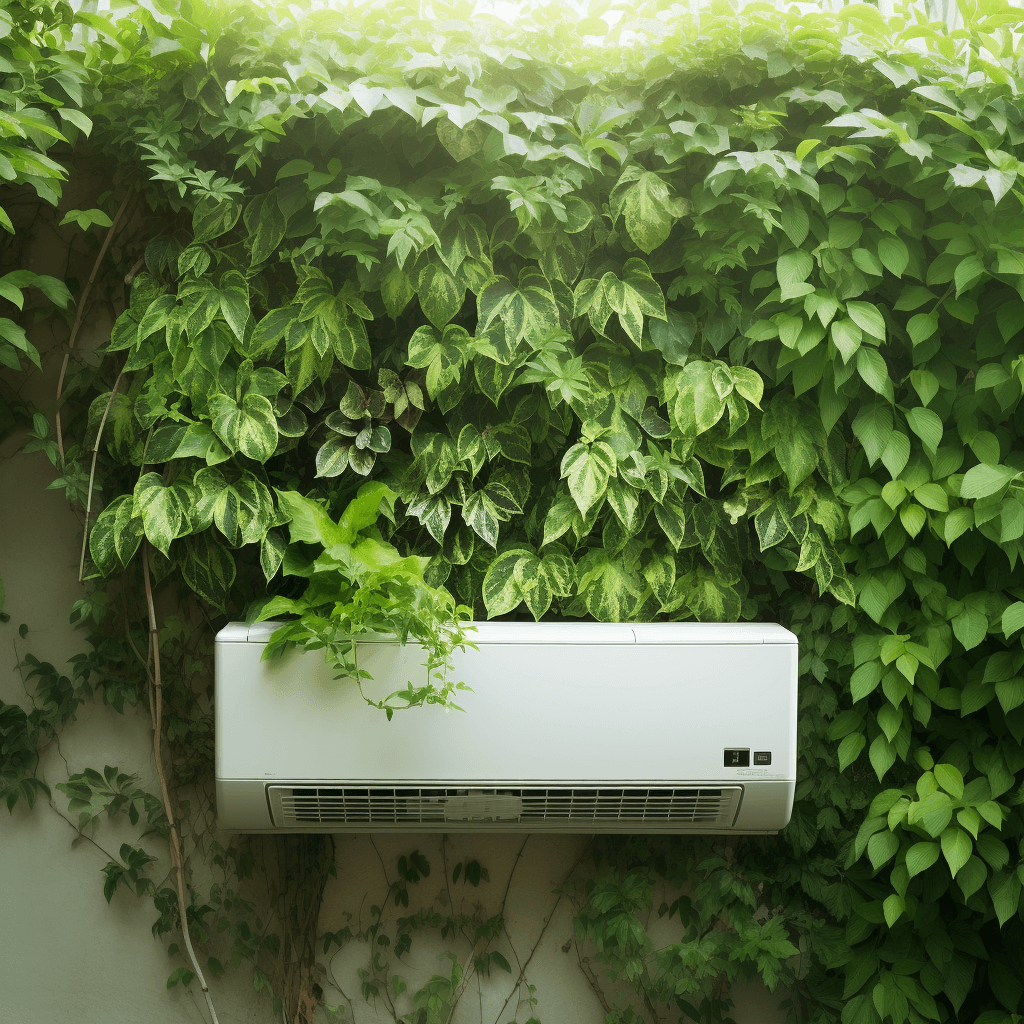
11. Opt for Inverter technology: a modern essential
Why choose a wall-mounted heat pump with an Inverter compressor? At AirGreen, we consider Inverter technology to be an essential pillar in the evolution of modern heat pumps. Since 2019, 100% of the heat pumps installed by AirGreen are equipped with this technology, ensuring our customers optimal comfort, considerable energy savings, and increased durability, even in the harsh conditions of the Quebec climate.
Here are the main advantages of inverter heat pumps:
A. Temperature precision and optimized comfort
Inverter compressors continually adjust their speed to the exact needs of your home, eliminating the temperature fluctuations associated with traditional ON/OFF systems. The result: a stable, comfortable indoor temperature, regardless of outdoor conditions.
AirGreen Example: Since 2019, we have installed thousands of Inverter heat pumps. One of our clients in Brossard, living in a house with large south-facing windows, immediately noticed the temperature accuracy. No matter how much sun changes during the day, his house remained constant at 21°C, without ever smelling
fluctuations typical of traditional devices.
B. Significant reductions in energy costs
The ability of an inverter compressor to adjust its power allows it to use only the energy needed to maintain the desired temperature. This operation significantly reduces energy costs.
A key figure: Customers equipped with an Inverter heat pump report savings of up to 30% on their energy bills, particularly in winter when heating is used intensively.
C. Effective moisture management
Dehumidification is optimized through precise control of the compressor speed, maintaining a comfortable humidity level between 40% and 50% , essential to avoid the feeling of “damp cold”.
AirGreen example: When installing at
Repentigny, in a house near a lake where ambient humidity was a major problem, the Inverter heat pump transformed the indoor environment, reducing humidity to 45% and eliminating the discomfort associated with overly humid air.
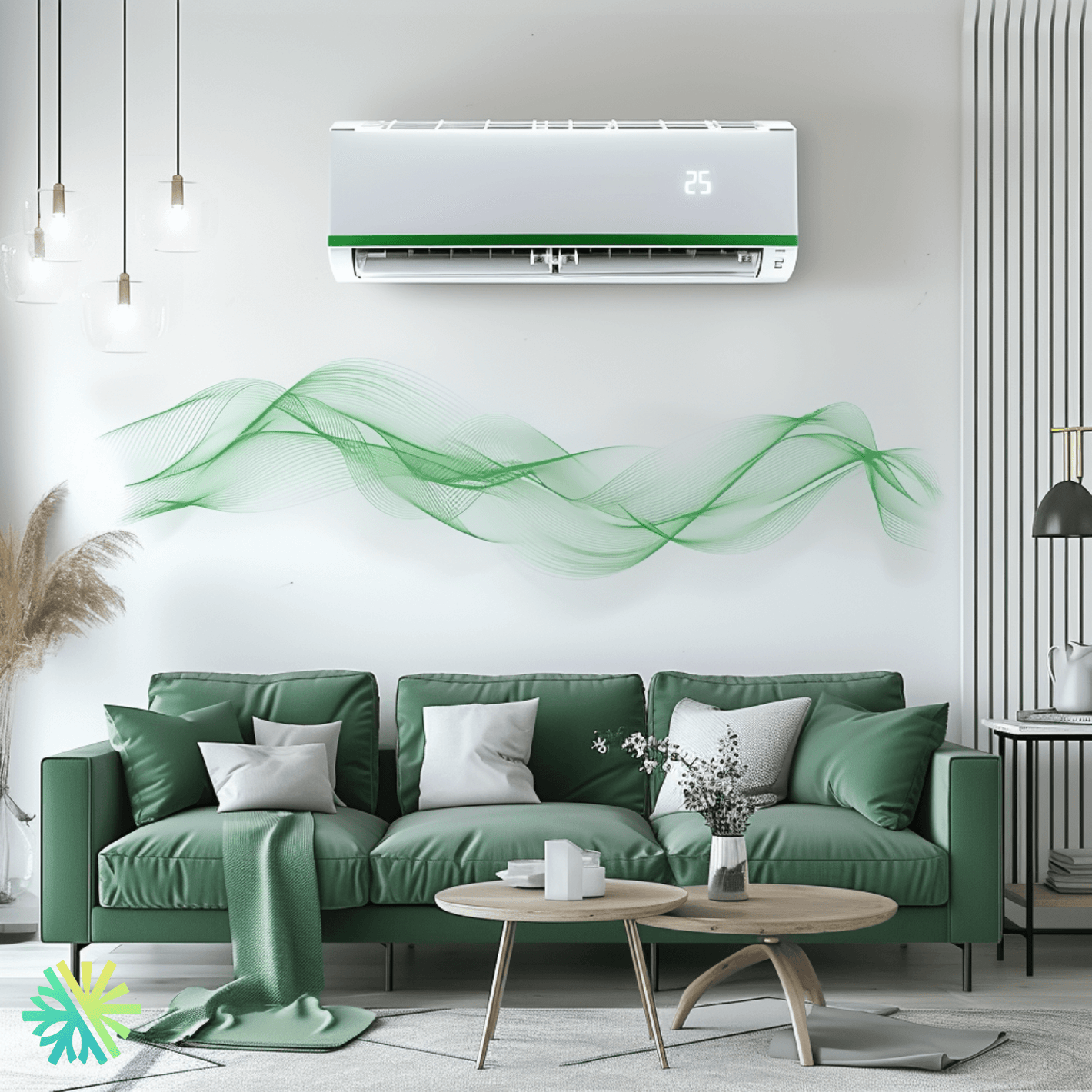
D. Extended lifespan
Soft starts and constant power adjustment reduce compressor wear, extending its service life.
- Notable fact: Customers with inverter systems experience fewer compressor failures and reduced maintenance requirements, a significant benefit over many years.
E. Quieter operation
Inverter heat pumps are significantly quieter, with soft starts and low speed operation.
- AirGreen Testimonial: In a semi-detached house in Laval, where the client complained about the noise of his old heat pump, the installation of an Inverter system brought immediate peace and quiet, making outdoor evenings on their terrace much more pleasant.
F. Optimal performance for the Quebec climate
Quebec's harsh climate requires devices that can perform in extreme conditions. Inverter heat pumps adapt with ease:
- Low temperature management: Stable performance down to -25°C.
- Smart Defrost: Reduces unnecessary interruptions in heating mode.
G. Investment adapted to future standards
With A2L refrigerants (R-32 and R-454B) and new energy standards, Inverter heat pumps guarantee environmental compliance and long-lasting performance.
Why choose AirGreen for your Inverter heat pump?
At AirGreen, we do more than just install heat pumps. We analyze each home, considering elements such as surface area, insulation, and budget, to offer a truly tailored solution. Whether it's for energy savings, optimal comfort, or sound peace, we support you every step of the way so that your investment is perfectly optimized.
Conclusion: Making the right choice with AirGreen
Each criterion listed here has a direct impact on your comfort and energy costs. At AirGreen, we combine technical expertise and understanding of your needs to guide you towards the wisest investment. Contact us today for a personalized evaluation and discover why we are the reference in wall-mounted heat pumps in Quebec!

A professionally executed installation: the AirGreen promise
At AirGreen, we know that installing a wall-mounted heat pump is more than just plugging in a machine. It’s a meticulous job that requires specialized skills, proper licensing, and absolute rigor to ensure safety, durability, and total customer satisfaction. Unfortunately, too many stories in our industry begin with poorly done installations by unlicensed or inexperienced contractors. These situations leave homeowners frustrated and often without recourse, especially when manufacturer warranties are voided due to poor workmanship.
Essential licenses for your peace of mind
At AirGreen, we hold all the necessary licenses to carry out installation, maintenance, and repair work, in compliance with the strict rules of the Régie du Bâtiment du Québec (RBQ). Our licenses include:
- 15.8 Ventilation
- 15.10 Refrigeration
- 16 Electricity
These three licenses are not only fundamental to carrying out HVAC work, but they are also mandatory for our customers to receive subsidies from Hydro-Québec and other government programs.
In addition, AirGreen has a $2 million liability insurance policy , ensuring that our customers are protected in all circumstances, no matter the situation. This gives you complete security, knowing that even if the unexpected happens, you will never bear the brunt of the consequences.
Additional licenses to meet every need
At AirGreen, we don’t settle for the bare minimum. Over the years, we have also acquired additional licenses to allow us to handle more complex or unusual projects, without the need for subcontractors. These licenses include:
- 3.2 Small concrete works
- 4.1 Masonry structures
- 4.2 Non-structural masonry work marble and ceramic
- 5.2 Metalwork
- 6.2 Wood and plastic work
- 7 Insulation, waterproofing, roofing and exterior cladding
- 9 Finishing works
- 11.2 Special equipment and products
- 13.5 Special or prefabricated installations
Thanks to these certifications, we are able to carry out projects involving varied work, while maintaining total control over quality. Each task is carried out by our own employees , trained in-house to meet AirGreen's high standards. No subcontractors, no compromises.

Why Licenses and Experience Are Essential
Here's why working with a company like AirGreen that's properly licensed and insured makes all the difference:
1. Guarantees preserved
Manufacturers require installations to be performed by qualified professionals in order for their warranties to remain valid. Installation by an uncertified contractor will immediately void your warranty rights, leaving you with unexpected repair costs.
AirGreen Example: We were recently called by a homeowner whose previous installation was done by an unlicensed contractor. Their heat pump warranty had been voided, but by re-installing the unit properly, we were able to negotiate directly with the manufacturer to reinstate some of the coverage.
2. System and occupant safety
Improper electrical connections or installation can cause serious problems, such as fires or costly breakdowns. With our RBQ licenses and expertise, each installation is carried out following the strictest safety standards.
3. Protection of workers and owners
Many homeowners don’t realize that hiring an unlicensed contractor can leave them liable if an accident occurs. With AirGreen, you never have to worry about that. All of our employees are covered by our liability insurance and workplace safety measures.
AirGreen Example: During a complex project in a commercial building, our team carried out work at great heights requiring safety expertise. Thanks to our certifications and specialized equipment, we were able to complete the project without incident, while respecting the highest standards.
4. Consistent quality thanks to our internal employees
Unlike other companies, we never use subcontractors. Every installation, maintenance or repair is carried out by an AirGreen employee. This means we always know who did what, ensuring impeccable quality control.
AirGreen Example: During a residential project in Laval, a client appreciated the fact that all steps, from the initial assessment to the final installation, were carried out by the same technician. This allowed for clear communication and total satisfaction.
Conclusion: Why choose AirGreen?
With AirGreen, you choose a company that combines skills, certifications, and passion to offer sustainable and high-quality HVAC solutions. By working with us, you have the assurance that your investment is in good hands, with preserved warranties, total security, and optimal comfort for years to come. Contact us today for a no-compromise installation!












